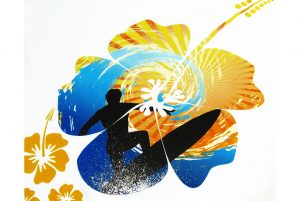Reducers - And When To Use Them
July 28, 2021
 In this article, published by Impressions Magazine, Kieth Stevens gives us a breakdown on the different uses and types and of reducers in screen printing.
Reducers lower the viscosity or thickness of an ink when you feel the need to make an ink creamier or easier to print. Most inks come ready for use right out of the container and rarely need to be adjusted. Inks out of the container should always be stirred up for a few minutes prior to use. Stirring the ink can change the viscosity of the ink a bit so that it can make them easier to print. But at times, a reducer can help.
There are three types of reducers that are common in the world of Plastisol Inks:
1) The first one is the most common and it’s called a curable reducer. Curable reducers contain a balance of plasticizers and resin (ingredients that make up plastisol compounds) that enable the reducer to cure on its own. Why is this a good thing? A curable reducer can be added to a finished ink in pretty much any amount without fear of it ruining the balance of the ink or possibly creating an ink that may not cure or fuse.
2) Another type of reducer is a pure plasticizer type (viscosity modifier/reducer) that does not contain resin and must be used very carefully and sparingly, usually just 0.5% up to about 2% at the most. Because it does not contain resins, it is not curable and thus must rely on the resins that already exist in the finished ink. If you add too much non curable reducer to a finished ink, the ink will not cure or fuse and may crack after the curing process and/or may come off the garment in the wash.
3) The third type of reducer is a low-bleed type. A low-bleed reducer is intended to be used along with a low-bleed white to help maintain the low-bleed properties of the low-bleed inks. They are usually curable, meaning that a generous amount can be added to a finished ink. However, I would not recommend such a step. Why? Adding more reducer dilutes the opacity of the white ink and defeats the purpose of what it is designed to do – block out the underlying dark, bleeding fabric.
Curable reducers are being used to extend inks, to tone down the strength of a color and/or to make the prints softer to touch. Some bases (such as our Softhand Clear Base or Sentri Curable Reducer) have evolved from curable reducers and are very popular in creating water-base type prints without the hassle of ink drying or having to use special emulsions, etc.
In this article, published by Impressions Magazine, Kieth Stevens gives us a breakdown on the different uses and types and of reducers in screen printing.
Reducers lower the viscosity or thickness of an ink when you feel the need to make an ink creamier or easier to print. Most inks come ready for use right out of the container and rarely need to be adjusted. Inks out of the container should always be stirred up for a few minutes prior to use. Stirring the ink can change the viscosity of the ink a bit so that it can make them easier to print. But at times, a reducer can help.
There are three types of reducers that are common in the world of Plastisol Inks:
1) The first one is the most common and it’s called a curable reducer. Curable reducers contain a balance of plasticizers and resin (ingredients that make up plastisol compounds) that enable the reducer to cure on its own. Why is this a good thing? A curable reducer can be added to a finished ink in pretty much any amount without fear of it ruining the balance of the ink or possibly creating an ink that may not cure or fuse.
2) Another type of reducer is a pure plasticizer type (viscosity modifier/reducer) that does not contain resin and must be used very carefully and sparingly, usually just 0.5% up to about 2% at the most. Because it does not contain resins, it is not curable and thus must rely on the resins that already exist in the finished ink. If you add too much non curable reducer to a finished ink, the ink will not cure or fuse and may crack after the curing process and/or may come off the garment in the wash.
3) The third type of reducer is a low-bleed type. A low-bleed reducer is intended to be used along with a low-bleed white to help maintain the low-bleed properties of the low-bleed inks. They are usually curable, meaning that a generous amount can be added to a finished ink. However, I would not recommend such a step. Why? Adding more reducer dilutes the opacity of the white ink and defeats the purpose of what it is designed to do – block out the underlying dark, bleeding fabric.
Curable reducers are being used to extend inks, to tone down the strength of a color and/or to make the prints softer to touch. Some bases (such as our Softhand Clear Base or Sentri Curable Reducer) have evolved from curable reducers and are very popular in creating water-base type prints without the hassle of ink drying or having to use special emulsions, etc.


